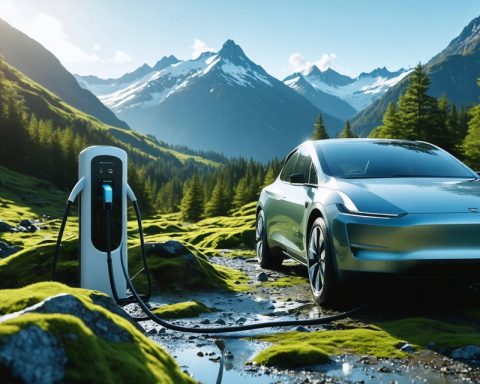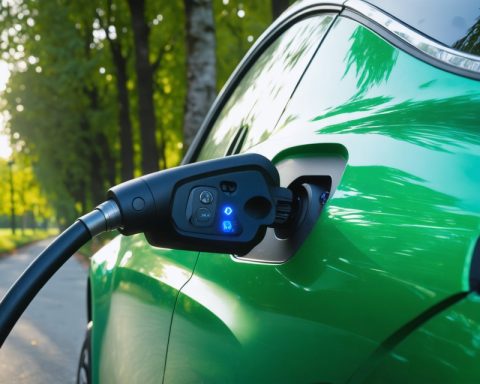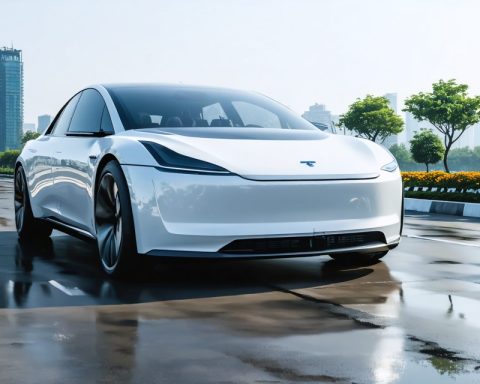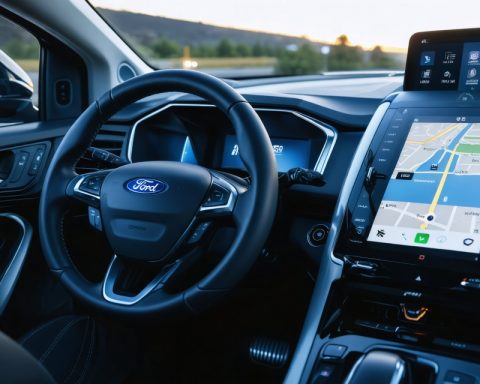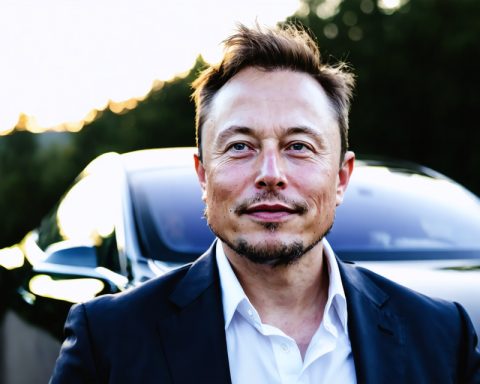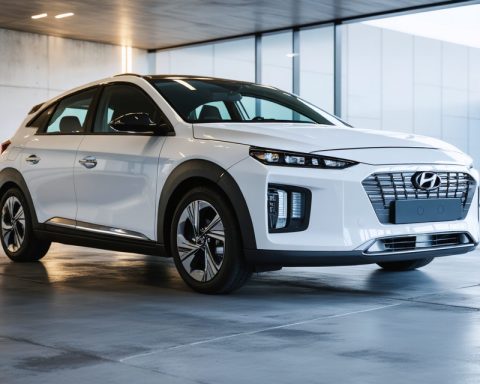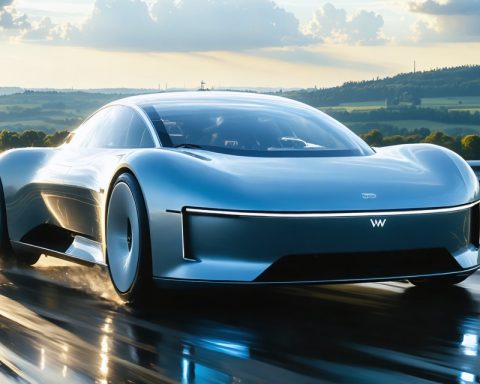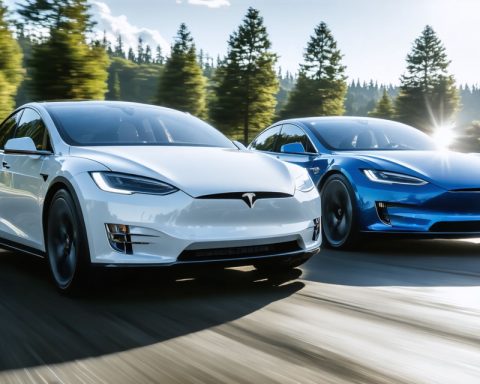- Hyundai adapts to evolving automotive demands by pivoting a Georgia plant to produce hybrid vehicles alongside electric ones.
- Kia Corp plans to manufacture hybrid models at the facility, targeting 1.25 million annual US sales, with Kia’s output accounting for 40% of the plant’s capacity.
- The plant’s annual vehicle production capacity will increase from 300,000 to 500,000, boosting Hyundai and Kia’s US production to 1.2 million vehicles.
- Hyundai’s strategic shift includes a $21 billion investment, underscoring its commitment to innovation and market adaptability.
- The initiative comes amid US proposals to reduce EV subsidies and impose tariffs, highlighting a strategic pivot to counter potential policy changes.
- The Hyundai and Kia alliance exemplifies strategic adaptation, with hybrid models poised to strengthen their presence in the US market.
In the peach-laden heart of Georgia, something monumental is unfolding—a testament to innovation and strategy in the ever-pivotal automotive landscape. As a world where electric vehicles (EVs) were once hailed as the undisputed future now hesitates, Hyundai, South Korea’s beacon of automotive prowess, is pivoting its plans for their latest venture in Ellabelle, Georgia. Originally envisioned as a cradle for purely electric cars, the Hyundai Metaplant North America now pivots, embracing the hybrid revolution to satisfy the growing global nuances in vehicle demand.
Amidst sleek assembly lines and futuristic designs, Kia Corp, intrinsically linked to Hyundai through a strategic partnership, plots the birth of a new breed of hybrid vehicles in this sprawling US facility. Guided by CEO Song Ho-sung’s vision, the hybrid push forms part of Kia’s ambitious blueprint to reach an impressive 1.25 million annual vehicle sales in the US. With Kia models projected to account for a significant 40% of the plant’s output, this factory is destined to become a cornerstone of Kia and Hyundai’s American strategy.
Hyundai’s decision to boost the factory’s potential from 300,000 to a staggering 500,000 vehicles annually signals a fearless response to the changing tides of automotive demands. This adjustment could lead Hyundai and Kia’s collective US production capacities to ascend to a striking 1.2 million vehicles every year. An investment of $21 billion underscores the magnitude and necessity of this expansion, fulfilling a promise made amidst significant announcements at the White House, illustrating the deep intertwining of auto manufacturing and political arenas.
While President Donald Trump’s administration threatens the very fabric of the EV scene with proposed termination of subsidies and the imposition of a 25% import tariff, Hyundai’s calculated detour to hybrids serves as a buffer and a bold statement. With South Korea standing as the United States’ second-largest source of vehicles after Mexico, the stakes are higher than ever.
In this shifting automotive tableau, Hyundai and Kia intertwine strategy and foresight, crafting a path that navigates economic policies and market currents. The message is clear: adaptability is key. As hybrid cars enhance their grip on the American roadways, Hyundai’s Georgia endeavor stands as a symbol of change, resilience, and the perpetual dance of innovation.
Is the Future Hybrid? How Hyundai and Kia Are Shaping America’s Roads
In the burgeoning automotive hub of Ellabelle, Georgia, Hyundai is making strategic decisions to redefine its role in the global car market. Originally intended as a facility dedicated solely to electric vehicles (EVs), the Hyundai Metaplant North America is now evolving to incorporate hybrid vehicle production, responding to both current market demands and strategic governmental policies.
Strategic Shift: Embracing Hybrid Technology
Hyundai’s pivot to hybrid technology showcases a significant shift in the automotive industry, acknowledging the complexities and varied demands of consumers worldwide. This transition from a purely electric focus to hybrids illustrates Hyundai’s adaptive strategy, considering both immediate market conditions and future sustainability goals.
Real-World Use Case: Impact on the U.S. Market
– Economic Stability: By producing a range of hybrid vehicles domestically, Hyundai and Kia are contributing to economic stability and job creation in the U.S. automotive sector.
– Increased Production: The expansion to a 500,000 vehicle annual capacity signifies not just a response to market demand but also a proactive investment in building long-term industry resilience. This capacity increase will raise Hyundai and Kia’s collective U.S. production potential to approximately 1.2 million vehicles annually.
Market Forecast & Industry Trends
– Hybrid Growth: The hybrid vehicle market is expected to grow significantly in the coming years as consumers look for fuel-efficient alternatives amidst fluctuating oil prices and increasing environmental concerns.
– Regulatory Environment: Changes in government policies, including potential subsidies for hybrid and electric vehicles, could further accelerate this trajectory. It’s crucial for manufacturers to stay nimble in their strategies to adapt to these policy shifts.
Challenges and Controversies
– Political Landscape: The automotive landscape is heavily influenced by political decisions, including subsidies and tariffs. The proposed termination of EV subsidies and a 25% import tariff pose significant challenges.
– Consumer Preferences: As these factors affect price and availability, consumer preference may shift, making it imperative for Hyundai to maintain versatility in its market offerings.
Experts Weigh In
Industry experts, including Alexandria Yoon-Hendricks from “Automotive News,” suggest that the hybrid vehicle market is not a mere stopgap but a significant bridge towards a fully electric future. The flexibility of power options in hybrids makes them attractive to cautious consumers wary of range anxiety associated with pure EVs.
Actionable Recommendations for Consumers
– Evaluate Fuel Efficiency: Consider hybrid vehicles for their superior fuel efficiency, especially for daily commuting.
– Monitor Incentives: Stay informed about potential subsidies or tax credits for hybrid vehicles to maximize financial benefits when purchasing.
– Future-Proof Investment: With the automotive industry leaning towards hybrids, purchasing a hybrid vehicle could offer long-term reliability and cost savings.
Quick Tips for Consumers
– Research different models to find a hybrid that fits your lifestyle and driving needs.
– Consider total cost of ownership, including maintenance and fuel savings, when evaluating hybrid vs. traditional vehicles.
To explore more about Hyundai’s initiatives, visit the Hyundai.
In conclusion, Hyundai and Kia’s strategic move in Georgia is more than a tactical response; it’s a forward-thinking adaptation to an ever-evolving automotive market. This development not only positions them as leaders in hybrid technology but also sets a precedent for adaptability in the face of economic and policy changes.

